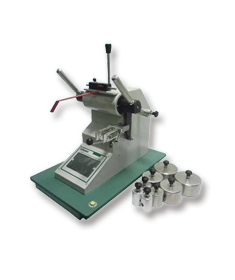
NewsInformation Center
Can Elmendorf tensile testing machine test thin fabrics?
2023/07/31
The Elmendorf Tear Tester is a device commonly used to measure the tear strength of materials, usually for tear strength testing of thin materials such as paper, plastic film and textiles. Although its primary application is paper and plastic films, it can also be used to test the tear strength of certain thin fabrics. However, it should be noted that the Elmendorf Tear Tester has a limited range of applications and may not be suitable for some special materials or fabrics.

Principle of Elmendorf Tear Tester
The Elmendorf Tear Tester measures the ability of a material to tear under stress. To test, a pre-cut specimen is placed in the grips and a tensile force is applied to tear the specimen. The testing machine records the tearing force and calculates the tearing strength according to the tearing shape of the sample. During the test, attention should be paid to the preparation of the sample and the selection of fixtures to ensure the accuracy and repeatability of the test.

Test Notes for Thin Fabrics
- Testing of thin fabrics can be challenging with specimen preparation and fixture selection. Thin fabrics are fragile and easily damaged, so special care needs to be taken when preparing the sample to avoid damage to the sample that would lead to inaccurate test results.
- Clamp selection also requires special attention. The size and shape of the clamp should be suitable for thin fabric testing to ensure that the sample is evenly stressed during the test and to avoid excessive force on the edge of the sample and produce inaccurate tear results.
- Prior to testing, it is advisable to properly pre-treat thin fabrics, such as setting or finishing, to improve their mechanical properties and durability for more reliable test results.
- Since the main application areas of Elmendorf Tear Tester are paper and plastic film, its testing capacity may be limited, and it may not be suitable for some special materials or fabrics. When testing thin fabrics, it should be verified according to the specific situation to ensure the applicability of the testing machine.
Other test methods
For some thin fabrics, it may be necessary to use other applicable test methods to evaluate its performance. For example, in some textile industries, a commonly used tensile testing machine (Universal Testing Machine, UTM) can be used to test the tensile strength and elongation of fabrics. UTM can provide a more comprehensive mechanical performance test, but also pay attention to the reasonable selection of fixtures and test conditions to adapt to the characteristics of thin fabrics.
When testing thin fabrics, you should carefully understand the applicability and limitations of the test method, and follow the corresponding standards and guidelines to ensure the accuracy and comparability of the test results. If you need to test the mechanical properties of thin fabrics, it is recommended to consult a professional laboratory or testing agency for professional help and guidance.
Previous: How do you control shrinkage in fabric?
N e x t : What are the effects of UV light on the skin Ageing process?



